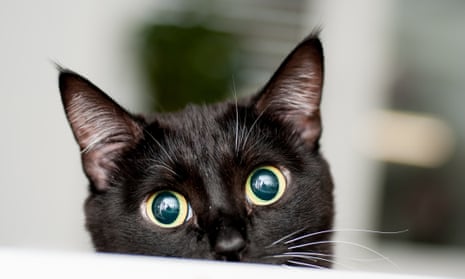We are by now accustomed to the whims of pet ownership – the post-Potter fashion for owls, the trend for terrapins and labradoodles, each year seemingly bringing a newly desirable beast. Pity the poor creatures, then, who find themselves hopelessly out of vogue.
At your local animal shelter, roughly half of the cats up for adoption will be black or black and white. But black cats, in particular, face difficulty in finding adoption.
Although some cultures regard black cats well (in Scotland they are said to bring prosperity and in England and Japan some say they bring good luck) in much of the world they are associated with evil omens and witchcraft.
But now they face an added challenge: the cruel demands of the Instagram age, in which black cats are deemed less aesthetically pleasing than their more colourful comrades. Between 2007 and 2013 the Blue Cross saw a 65% rise in the number of black cats taken in each year, and the RSPCA, noting similar figures, blamed the fact that black cats are not “selfie-friendly”.
“It’s not uncommon for many monochrome moggies to wait many weeks or months to be adopted,” says Gemma Croker from Cats Protection, which takes in 200,000 cats each year.

Keen to work out why so many black cats languish in their rescue shelters, the charity conducted a survey of potential adopters. While 70% of people claimed not to have a favourite colour, when they were shown pictures of black, tabby and ginger cats and asked to assess their personalities, the black cat was regarded less favourably. Black cats are seen as less playful, friendly, vocal or attention-seeking. Tabbies and gingers tend to find homes much more quickly. “They look more exciting to adopt,” says Croker.
Cats Protection have since launched an annual Black Cats’ Day to raise awareness of their plight, with similar schemes operating across the US and Canada. There is even an Instagram campaign too, using the hashtag #blackcatsrule.
How best to photograph your black cat? Guardian photographer Alecsandra Dragoi suggests that you position your cat to face the light “so you catch their the colour of their eyes. A softer light will bring out their colours and their details.
“And, of course, you can always edit your photos afterwards to bring up the shadows.”

Comments (…)
Sign in or create your Guardian account to join the discussion